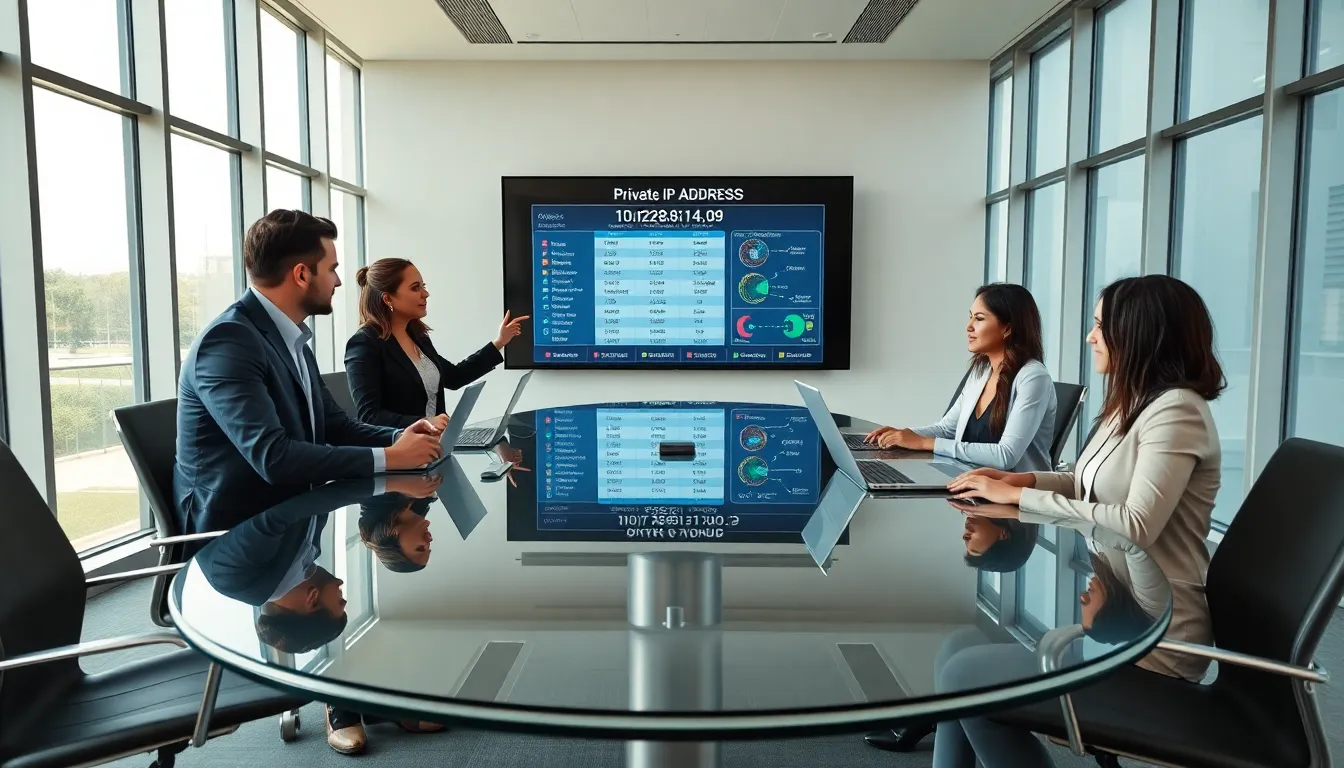Navigating the world of IP addresses can feel a bit like pulling off a magician’s trick: one moment, you’re mesmerized by the complexity, and the next, you just want to make it disappear. Enter 10.228.140.9, a private IP address that’s less like a celebrity and more like your neighbor’s garage, unassuming yet essential for the daily functions of networking. In this guide, we’ll pull back the curtain on IP addressing, exploring everything from the basics of what an IP is, to the unique uses of 10.228.140.9. Buckle up: we’re about to make networking a little less mysterious and, dare we say, fun.
Table of Contents
Toggle10.228.140.9

What Is an IP Address?
Every device connected to the internet, be it a smartphone or a server, has an identifier known as an IP address. Think of it as your device’s unique phone number, allowing it to communicate with other devices in the vast realm of the internet. This address enables data to travel seamlessly to the right destinations, making it a cornerstone of the internet.
Types of IP Addresses: IPv4 vs. IPv6
IP addresses come in two flavors: IPv4 and IPv6. The former, which looks something like 192.168.0.1, uses a 32-bit numeric addressing scheme, allowing for around 4.3 billion distinct addresses. But, with the growing internet population, IPv4 is slowly running out. IPv6 steps in with a whopping 128-bit address format. This increased capacity can cater to an almost unfathomable number of devices. Its format, featuring eight groups of four hexadecimal digits, looks more like this: 2001:0db8:85a3:0000:0000:8a2e:0370:7334.
Public vs. Private IP Addresses
When it comes to IP addresses, they can be categorized into two main types: public and private. Public IP addresses are the ones you’ll often see assigned to your internet connection. These are like your house’s address, necessary for devices outside your network to find you. Private IP addresses, but, are your internal addresses. Devices in a home or office use these addresses to communicate with one another without broadcasting their locations to the entire internet. Think of private IP addresses as the hallway conversations you have, no one outside the building needs to know what’s being discussed.
Exploring the Structure of the IP Address 10.228.140.9
Network Classifications
The address 10.228.140.9 falls within the private IP address range defined by the Internet Engineering Task Force (IETF). Specifically, any address ranging from 10.0.0.0 to 10.255.255.255 is allocated for private networks. This address configuration is crucial because it can support a plethora of devices without the risk of conflicting with public IP addresses while still allowing a family of devices to connect effectively.
Subnetting and CIDR Notation
Uses of Private IP Addresses
Subnetting is the process of dividing a network into smaller, manageable segments. This is useful for enhancing performance by decreasing network congestion and improving security. CIDR (Classless Inter-Domain Routing) notation accompanies subnetting, allowing for more flexible subnetting options. For instance, if 10.228.140.9 is part of a subnet with a CIDR notation of /24, it can have up to 256 addresses available within that range. Understanding and utilizing this effectively is vital for network administrators aiming to optimize performance.
Common Use Cases for 10.228.140.9
Potential Security Risks with Using Private IPs
The address 10.228.140.9 can be found in various settings, often functioning within a local network. It is used in home and corporate networking environments, typically assigned to devices like routers, network printers, or even servers. While private IPs are generally safe from outside threats, security risks still exist. Misconfigured devices could expose sensitive information or provide unauthorized access if not properly secured. Hence, employing robust security measures, like firewalls and regularly updating devices, remains crucial.
Best Practices for Address Management
For effective management, implementing a few best practices can prove invaluable. Maintaining a clear documentation of assigned IP addresses is essential to ensure no overlap occurs. Regularly updating firmware for devices assigned to these addresses helps safeguard against vulnerabilities. Also, considering DHCP (Dynamic Host Configuration Protocol) can simplify the process, allowing for automatic IP address allocation within a subnet. This greatly reduces management overhead and ensures that devices are assigned addresses in a consistent manner.

